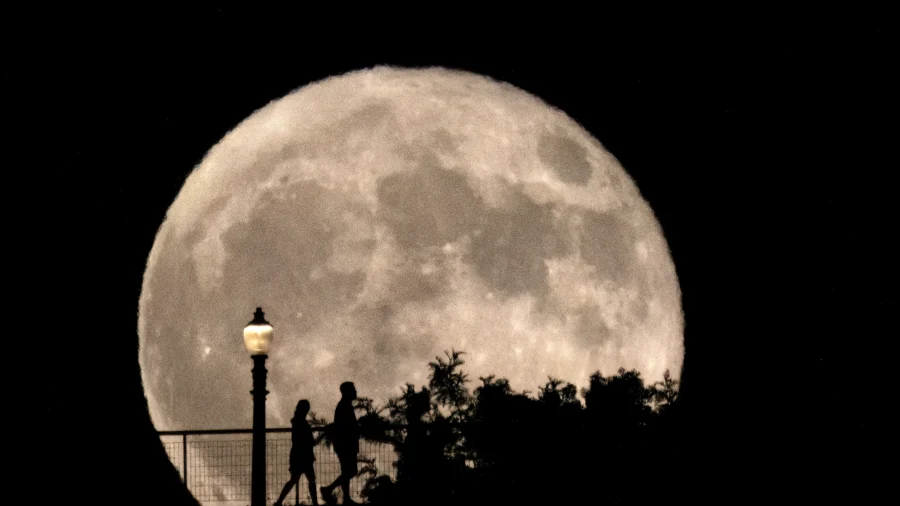October’s full moon, also known as the Hunter’s Moon, will be a supermoon that is set to appear this week on Oct. 17.
The upcoming supermoon will rise on Thursday at 7:26 a.m. EDT, according to NASA. The moon will be below the horizon at that time “so wait until sunset to watch it rise and take its place in the sky,” according to the Old Farmer’s Almanac. The moon will appear full from Tuesday evening through Friday morning.
For places west of the International Date Line, the full moon will occur late Wednesday night, and early Friday morning for places from New Zealand eastward.
“This will be the third of four consecutive supermoons and the brightest by a tiny margin,” NASA’s Gordon Johnston said.
The Hunter’s Moon is the first full moon following September’s Harvest Moon that occurs closest to the autumnal equinox.
Why Is It Called The Hunter’s Moon?
The earliest use of the name “Hunter’s Moon” was identified in the Oxford English Dictionary in 1710, according to the Old Farmer’s Almanac.
The publication states the full moon is called Hunter’s Moon because it signaled the beginning of hunting season and for hunters to prepare, collect, and store food for the upcoming winter season.
After the fields are harvested during the Harvest Moon, which occurs before the Hunter’s Moon, hunters can easily see the animals that have come out to search for food.
What Is a Supermoon?
The moon’s orbit around the Earth is an ellipse, meaning an oval that brings it closer to and farther from the Earth as it goes around. The moon’s distance to the Earth varies depending on where it is located along the orbital path and the time of the month. According to NASA, the furthest point in the ellipse is around 253,000 miles from Earth on average and the closest point has an average distance of around 226,000 miles.
A supermoon occurs when the moon is full and is at the closest point in its orbit to the Earth. This will cause the moon to appear slightly brighter and larger than a regular full moon, which is where we get a “supermoon.”
Supermoons only appear three or four times a year. After Oct 17, the final supermoon of 2024, referred to as the Beaver Moon, will occur on Nov. 15.

